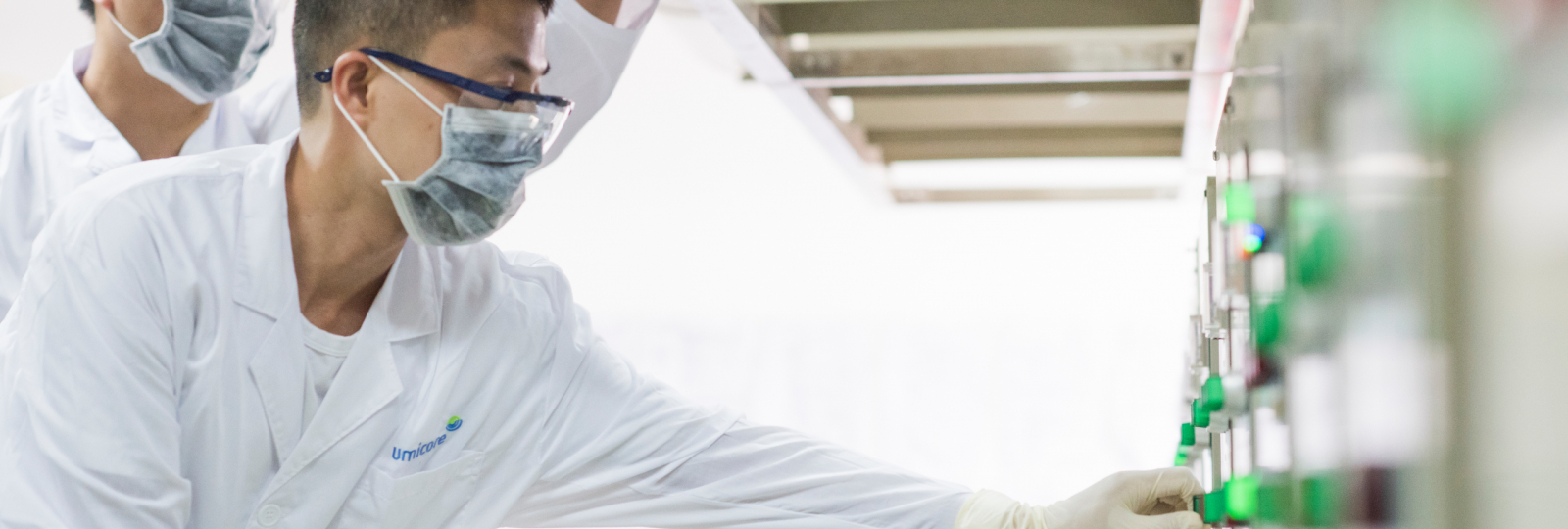
Innovation for a sustainable future

Umicore plays a key role in transitioning to a low-carbon future as our products deliver solutions for cleaner air and increased e-mobility, while we turn waste-metals into a resource.
As a materials technology company, technology is at the core of our success and we are committed to innovation to further strengthen our technology leadership in clean mobility materials and recycling.
In line with our Horizon 2020 strategy, we focus our research and development efforts on technologies that address the key global challenges of clean air (Automotive Catalysts), electrified transport (Rechargeable Battery Materials) and resource scarcity (Recycling).
Umicore’s innovation pipeline in rechargeable battery materials helps make electrified transportation a reality. Our rechargeable battery materials drive the energy density in today’s and tomorrow’s electrified vehicles. The ultimate performance of our materials increases driving range, while our leading innovative process technologies help bring our solutions to mass production.
On the path towards that longer driving range, we are applying a series of innovation strategies to develop the next generation of Lithium-ion cathode and anode materials. We have patented technologies to optimize these materials for ultimate performance: from changing the composition, to engineering for higher voltages, increasing packaging density and enhancing surface properties, all while constantly meeting the most stringent requirements of our automotive customers.


Most original equipment manufacturers (OEMs), our customers, have silicon-based anodes on their technology outlook map, as they have the potential to offer significantly higher energy density than current graphite technology -- though currently, the swelling of silicon remains a major challenge. Umicore has developed and is currently qualifying with customers its unique first-generation silicon-based anode material that can cope with this drawback.
Solid-state batteries are also on the OEMs’ technology outlook map. This technology could provide other advantages, such as increased temperature stability and safety, in addition to a longer driving range. That is why we are also developing --in collaboration with our customers-- cathode materials for solid state Lithium-ion batteries.
Our unique position in rechargeable battery material technologies is built on more than 20 years of product and process innovation and is further supported by an innovation roadmap that spans the next 20 years and more, continuously searching for higher energy density, always pushing for a longer driving range in electrified vehicles.
